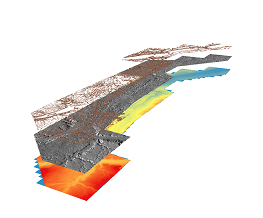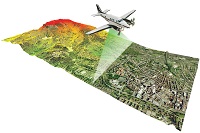Topography
Type of resources
Available actions
Topics
Keywords
Contact for the resource
Provided by
Years
Formats
Representation types
Update frequencies
status
Service types
Scale
-

Hillshade created from the Swift Current LiDAR Project 2009 – DEM. The hillshade provides a 3 D effect for the landscape covered by this project.
-

The AAFC Infrastructure Flood Mapping in Saskatchewan 1 meter Full Feature DEM are the full feature DEMs created at a 1 m interval for the capture area of Saskatchewan. The full feature grid point elevations were derived from the highest point in the High Vegetation class. At coordinates with no High Vegetation points the elevation of the corresponding bare earth grid point was applied.
-

LiDAR data collected in the fall of 2011 and spring 2012 for AAFC owned water control structures in the Pheasant Creek, Roughbark, Moosomin,Braddock, Maple Creek, Eastend, Altawan, Admiral, Russell Creek, Cadillac-Gouveneur, Cypress, Middle Creek and Lafleche areas.
-

The AAFC Infrastructure Flood Mapping in Saskatchewan 1 meter Bare Earth DEM are the bare earth DEMs created at a 1 m interval for the capture area of Saskatchewan. The bare earth DEM elevations were derived from a TIN surface model of the combined DTM Key Point and Ground classes in the LiDAR point cloud tiles. It should be noted that the grid point elevations have been interpolated from the LiDAR points and may contain greater uncertainty depending on the amount of interpolation performed.
-

Digital Elevation Model (DEM) created from LiDAR data captured by McElhanney Consulting Services Ltd (MCSL). The DEM represent s the elevation of the landscape covered by this project.
-

LASer files of a subwatershed in the La Salle watershed, north of Elie, MB. The LiDAR data was collected using Fugro Horizons proprietary FLI-MAP Fx LiDAR system.
-

Contour Lines generated from LiDAR data captured by McElhanney Consulting Services Ltd (MCSL). The contour lines connect points of equal elevation for the landscape covered by this project.
-

The Agriculture and Agri-Food Canada’s LiDAR Projects dataset was created from existing spatial data. It contains the footprints (outlines) of all the LiDAR data that is openly distributed by Agriculture and Agri-Food Canada. LiDAR (Light Detection And Ranging) is a method of acquiring survey points using optical remote sensing technology. The dataset indicates basic information about the location, source and properties of the data.
-

The LiDAR data was produced for an Agriculture and Agri-Food Canada land and water resource study. The data is required to produce high resolution DEMs to improve hydrologic and environmental resource modelling within the area.
-

The’ Qu'Appelle Valley Lakes system – Topography and Imagery’ series consists of topographic and imagery data for lakes within the Qu'Appelle River Valley in central Saskatchewan. This data was collected in the fall of 2008 and consists of contour lines, shorelines, spot heights, tile index, and imagery
 Arctic SDI catalogue
Arctic SDI catalogue